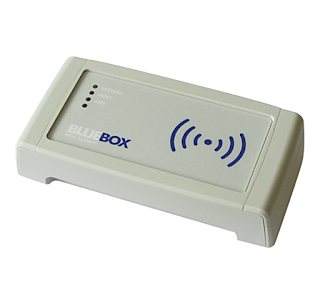A Detailed Look At RFID Technology And RFID Readers
Radio Frequency
Identification or RFID system refers to one of the latest techniques in
wireless data transmission and reception that is used for automatic
identification, security surveillance and asset tracking. If you're not much
familiar with the concept, let's try to understand what RFID system is all
about and how it actually works.
The RFID System
There are three main
components of RFID systems. The first one is RFID reader that sends interrogation
signals to RFID tag or transponder for identifying it. It is also referred to
as integrator. The second is RFID tag that actually contains identification
code. And, the final component is a middleware that maintains interface and
software protocol for encoding and decoding identification data coming from a
reader into some personal computer or a mainframe.
With other identification
systems not proving enough, RFID technology is quickly taking over the fields
of SCM, logistics, security access control and asset tracking among several
others.
Active VS Passive RFID Tag Reader
In the entire RFID system,
RFID tag reader plays a key part as it is making all the tag interrogations.
Tag readers can be broadly divided into Passive and Active readers. Here are a
few details about both the types.
Passive Readers
They're limited to
‘listening' only and don't perform any additional interrogations on RFID tags.
These tag readers are also known as ‘dumb' readers. During tag interrogations,
a CW signal is sent by the reader as a power source to process data for RFID
transponder. Data transmission is then provided by the transponder in the form
of unique ID and, therefore, no command or message is required from the reader.
Active Readers
They are the real
interrogators and listen to the tags based on the number of RFID tags and the
communication protocols used for transmission of data between tags and readers.
These readers are comparatively more capable than the passive readers. Their
design is more complex and besides providing a power source and a transmission
medium for transponders, active readers also send data towards tags that are
implemented as modulation of the carrier signal. This necessitates
transponders to have demodulating circuitry so that they can decode the command
of the RFID tag reader. These readers are available commercially and are
successfully used in product identification. They can listen and call out to
RFID tags and may even be used for determining transponder's area location
successfully using amplitudes of transponders' response to interrogation from
the reader.
Regardless of their type,
the basic functionality performed by RFID readers is communicating with RFID
tags using radio waves emitted through an antenna. The readers can be further
classified into UHF, HF, and microwave frequency ranges. These ranges also
determine the prices of the readers as well. So, this makes UHF readers be the
most expensive of the lot. What makes them really expensive is the fact that
they don't have any IC integration. Besides, they are produced in low volume
and their customized components are not available.



Comments
Post a Comment